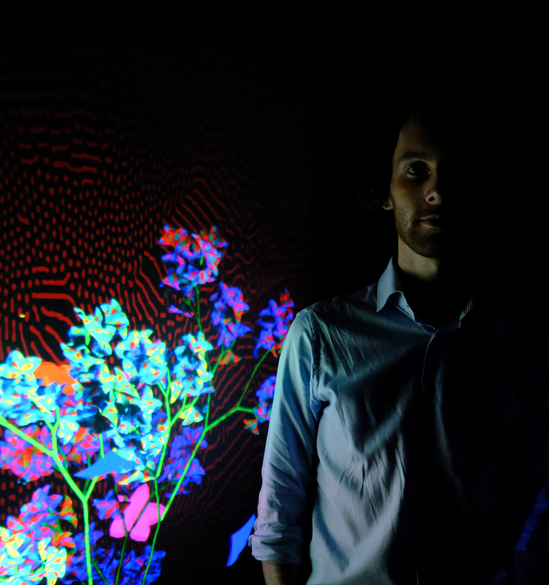
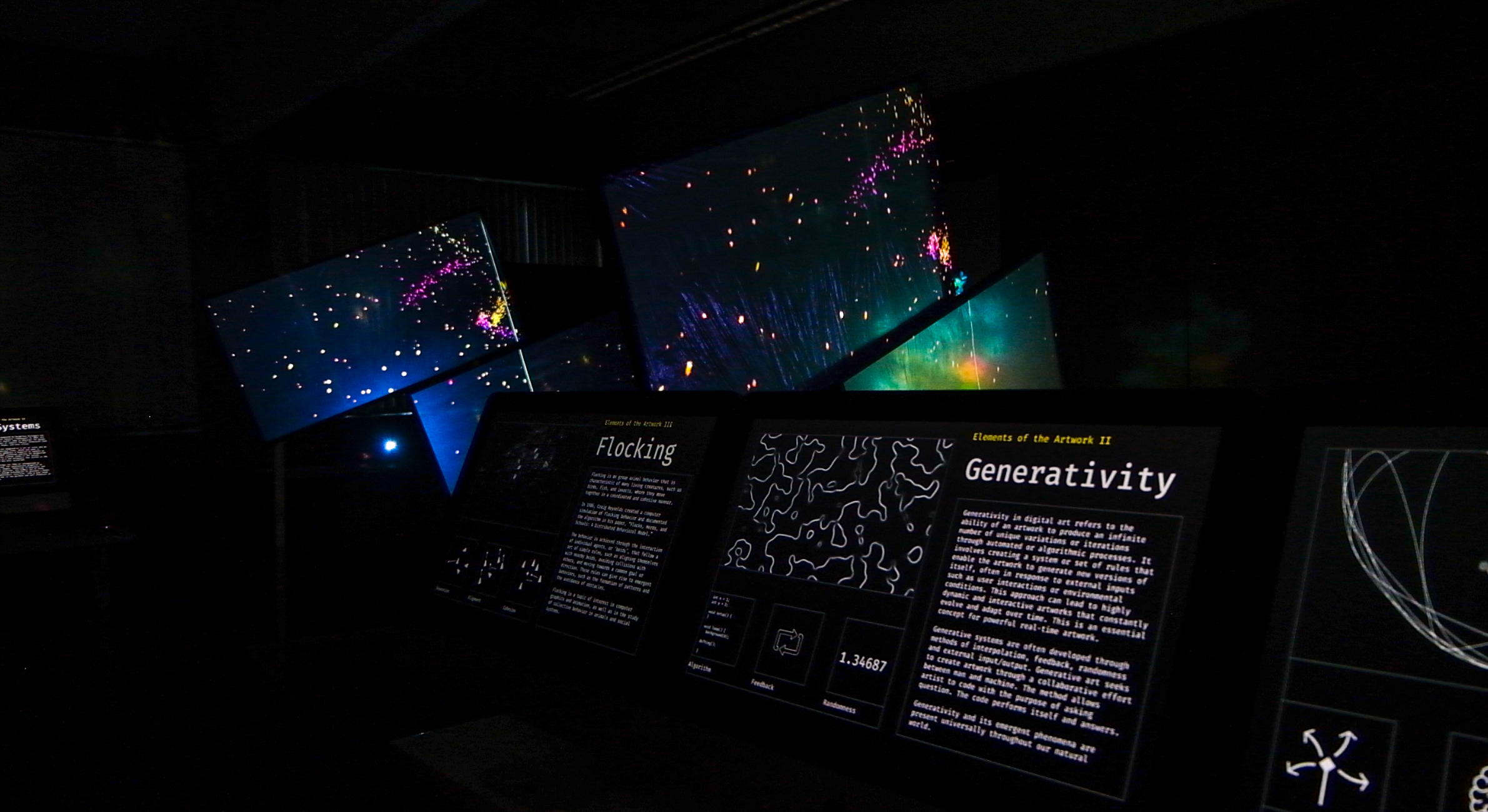
Exploring the Potential of Biologically Inspired Algorithms for the Development of Generative Interactive Art.
BSc MMPT class 2023 Winner of the Piquant Media Award 2023
Supervisor: Dr. Giuseppe Torre
This project aims to explore the potential of biologically inspired algorithms for use in generative digital art, and as a result demonstrate this through an interactive art installation. This will look at how nature can be reimagined with the use of computational media and synthetic biology into dynamic artwork-systems. Philosophical ideas will be investigated, both ostensible and metaphysical, through the exploration of emergent art developed with a generative approach, wherein the autocratic controls are strongly reduced while the autonomous system is still constrained by existing physical mathematics in conjunction with physical interactions from the audience. Generative and algorithmic art has been shown to challenge the boundaries of contemporary artistic practice and research by exploring processes of both physical and social systems in an artistic context. Generative art systems will be idealized and created through a practice-based research methodology, including the development of prototype artworks and virtual installations. Aims of the project are to explore concepts of generativity, reality, agency, complexity, and the harmony that can exist in art between nature and a rapidly changing world of technology.
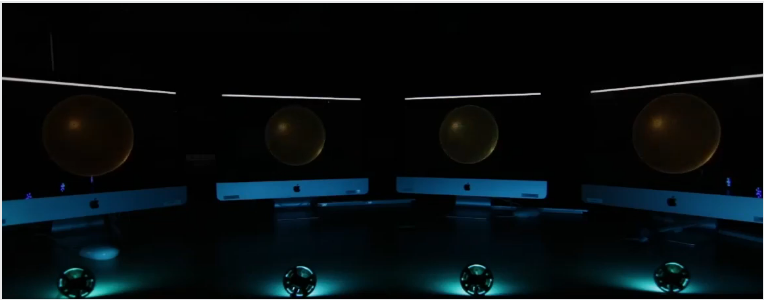

Feedback: artistic and philosophical considerations of feedback as an artistic tool
BSc MMPT class 2022 Winner of the Piquant Media Award 2022
Supervisor: Dr. Nicholas Ward
This project explores the question, how can feedback be used in creating technological systems that display traits stemming from philosophical themes outlined? Philosophical ideas surrounding the use of feedback in a sound art context are explored and implemented into the creation of a sonic art installation. Areas that deal with eco-systemic design and the creation of systems which display complex and unpredictable behaviours as well as human interaction with sound, space, and technology, are a focus throughout the project. A series of case studies are undertaken to provide an understanding of how feedback has been used in the world of art. The system is created through a practice-based research methodology where it is influenced by the research undertaken and in turn influences the direction of the research. It is created using Pure Data and is designed to be loaded onto multiple computers. The system is open to its environment and translates sonic information from the physical space and its surroundings through its sonic output. It displays semi-autonomous behaviours and allows the observer to explore their environment, and their place in it, through a process of active and passive listening.
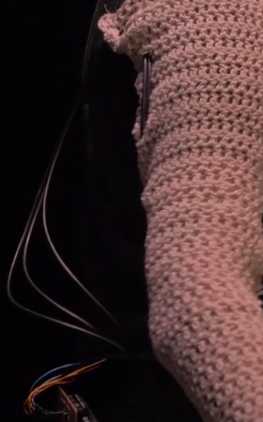
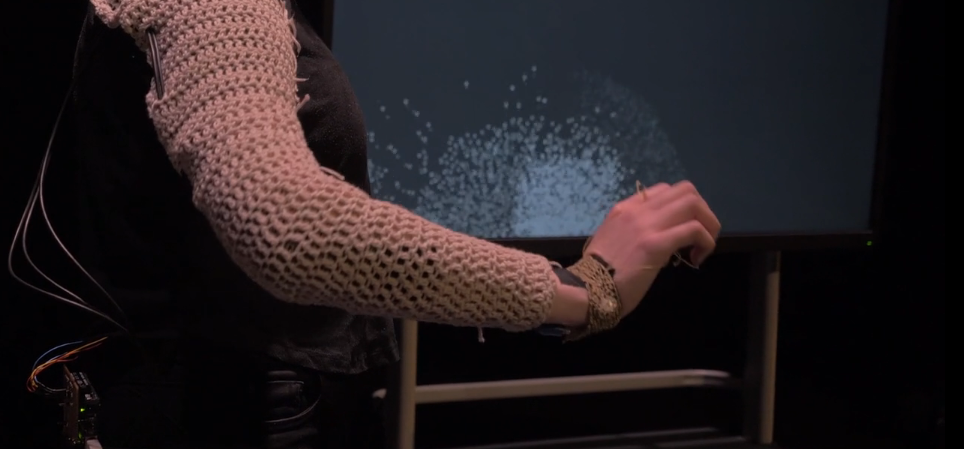
Visualising Movement Using Smart Textiles
BSc MMPT class 2021
Supervisor: Dr. Nicholas Wrd
This project is an aesthetic inquiry into the use of smart textiles to create a counter point layer to the traditional paradigm of live movement performance and choreography and represent the kinesthetic experience of dance and movement performers. This project describes the steps taken to create a performance system which uses a smart textile sleeve to facilitate nonverbal communication between a choreographer and performer, tracking the movement responses of the performer to the nonverbal communication for use in real time data visualisation.
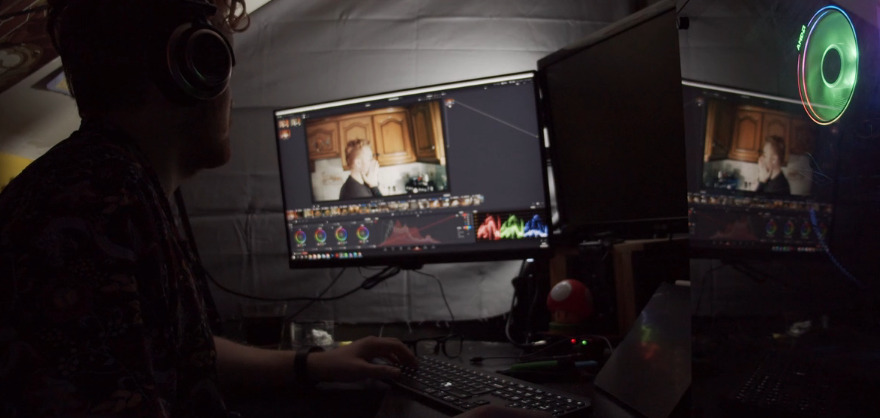
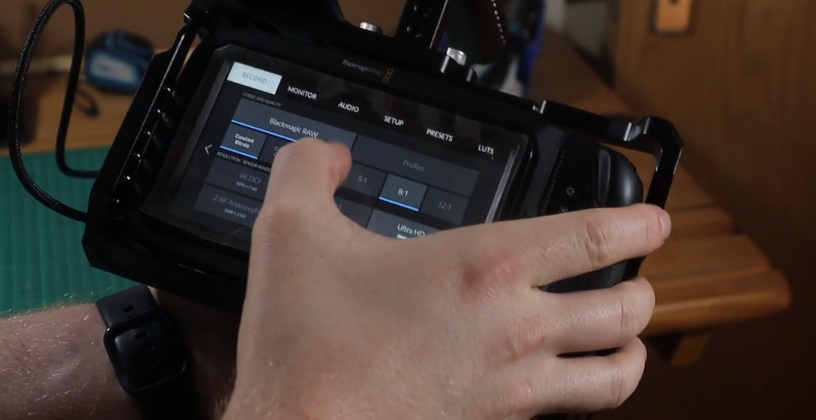
Negotiating Colour Grading within a high-definition film context
BSc MMPT class 2022
Supervisor: Dr. Robin Parmar
Over the last decade, the process has had a rapid change in availability outside of the well-funded post-production studio setting. With remarkable advancements in computer technology, powerful and precise colour grading is now available on systems affordable by amateur filmmakers or video producers. This unprecedented shift in technology availability for colour correction and grading means that this process is now open to a new group of users without the required knowledge of colour perception, digital video fundamentals and film production processes to utilise it to its true potential. This lack of professional knowledge is particularly damaging with the growing availability and popularity of RAW video formatting, a video format that brings new levels of opportunity to colour manipulation and image fidelity but is a file format that requires precise post-production work to be presentable This paper, therefore, will be a deep investigation into research topics such as colour grading, human visual perception, video signal manipulation, digital video encoding, screen technology advancements, inter post-production work relationships and will explain how one can adapt this highly technical process into the time, space and budget constraints of amateur video production.
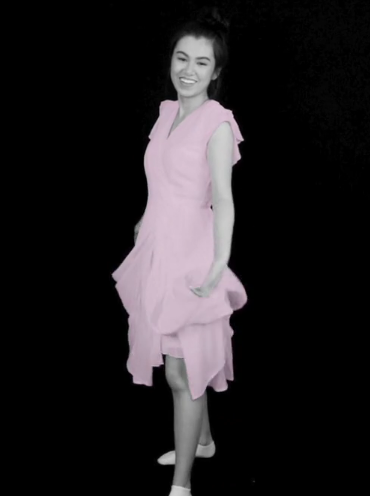

"Women's Work" in Colour Film Processing
BSc MMPT class 2021
Supervisor: Dr. Robin Parmar
This research investigates the different colour film processes. Starting with the process of hand painting in 1895, which led to stencilling in the early 1900s. Then it looks into tinting and toning, a process that heavily relied on editing, starting in 1896. It then discusses the company Technicolor and their groundbreaking film colour process. Focusing on the role of Natalie Kalmus, a colour consultant, who received backlash for her success as woman in Hollywood in the 1940s. Finally, it discusses colour in animation and the gendered roles in the early days of Disney. When the only job available to women was in The Inking and Painting Department, where sexism was rampant in what was considered a “men’s medium”. It also details the working conditions of Disney’s first female storyboard artist, Bianca Majolie a glimpse into what life was like for a woman that didn’t stick to the societal norms of the time. Each of these processes informed the accompanying digitally hand-tinted video. Which allowed for active participation in a process analogous to that done by the women mentioned in the paper. Giving a deeper insight into their lives.
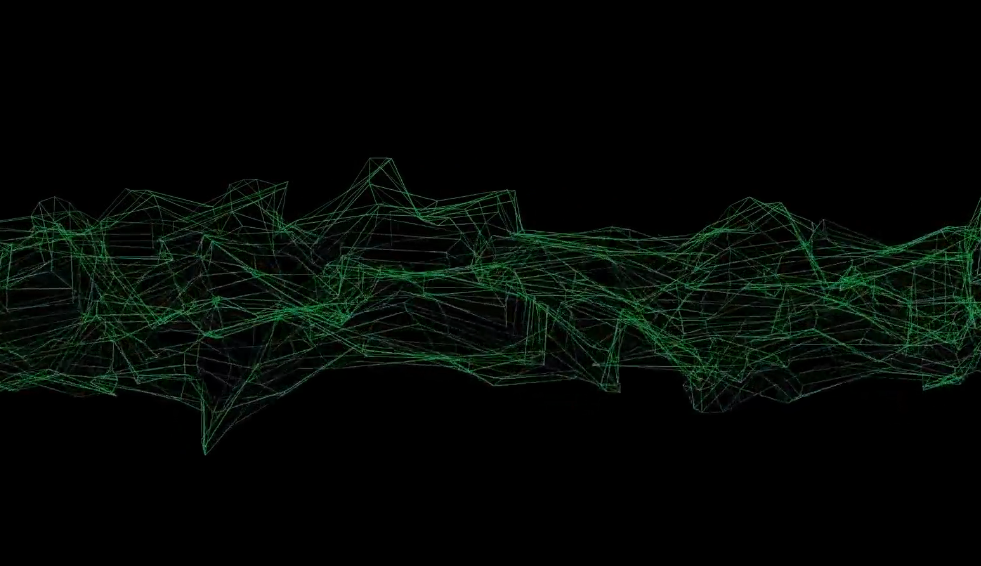
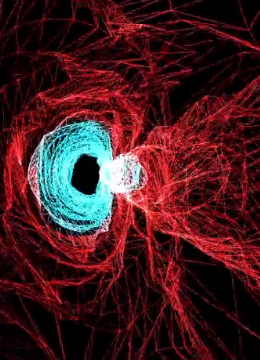
Subjectification of private data
BSc MMPT class 2018
Supervisor: Dr. Giuseppe Torre
Adam Deegan creates this wonderful motion graphics from data gathered on his own interaction with social media over 12 hours.
The data and his emotional response to it drives the graphics. Music composed by Adam Deegan too.